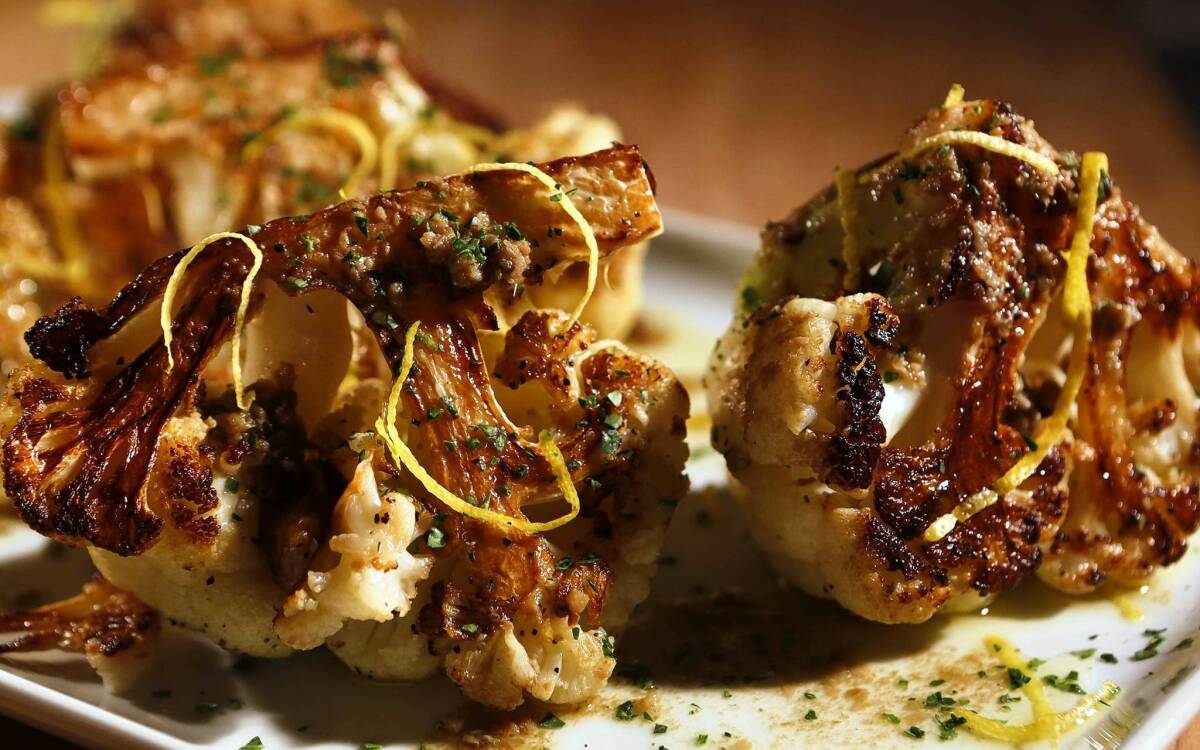Cauliflower with bagna cauda

So you think you don’t like anchovies? Well, I think you’re wrong. Or at least I’d like to convince you otherwise.
I, too, was once a hater of this oily, silver-skinned saltwater fish, and I blame it all on the poorest quality versions, packed in inexpensive oil, that are often laid atop pies in American pizza joints. Reviling the anchovy pizza was like an American pastime, and I proudly joined in.
Then about 20 years ago, one of the chefs at Campanile made an anchovy aioli, which she smeared on the olive bread crostini that we served alongside a tuna niçoise salad. It was so delicious, I knew I had to give the anchovy a chance.
In the years since, as I traveled more in the Mediterranean, where anchovies are used in many and delicious ways, I came to love eating and cooking with this fish.
At Pizzeria Mozza, Osteria Mozza and Chi Spacca, we use salt-packed anchovies as a foundation flavor in the braising liquid for lamb dishes and in wild boar ragú, the same way we might add garlic, red pepper flakes or herb sprigs. This use of anchovies as a background flavor isn’t something I thought of myself. Asian fish sauces are made primarily from anchovies, and Worcestershire sauce contains anchovies as a primary ingredient. Used as a “secret weapon,” anchovies add a salty, briny flavor that some experts say imitates umami, the secret flavor that is often attributed to monosodium glutamate (MSG).
Having completely surrendered to my love of anchovies, I also use them in more overt ways. I use anchovies in abundance in the tri-colore salad at the Pizzeria (my homage to the Caesar).
An anchovy compound butter — sweated shallots, garlic, parsley, black olives and anchovies beaten into soft butter, rolled into a log and chilled — is hands-down my favorite condiment for grilled steak.
And they are the essential flavoring for bagna cauda, a warm sauce that is delicious spooned over grilled vegetables or even just grilled bread.
Bring to a boil a pot of salted water large enough to fit the cauliflower. While the water is heating, trim about an inch of the core from the cauliflower and remove any large leaves, leaving the smaller ones intact. Through the core, cut the cauliflower into 6 wedges.
Add the cauliflower to the pot and cook just until slightly tender, 2 to 4 minutes. Remove the cauliflower and place it in a bowl of ice water to stop the cooking. Remove and pat dry. Season each piece with a pinch of salt and pepper, or to taste.
Heat a heavy-bottomed sauté pan (preferably cast iron) over medium-high heat. Add the oil to coat the bottom of the pan. Add the cauliflower pieces and sear them on each of the two cut sides until nicely browned, 6 to 8 minutes. Transfer the cauliflower to a serving platter.
Spoon some of the warm bagna cauda over the cauliflower, placing the rest in a bowl to serve on the side. Garnish the cauliflower with chopped parsley. Using a lemon zester, zest strands of lemon over the cauliflower.
Get our Cooking newsletter.
Your roundup of inspiring recipes and kitchen tricks.
You may occasionally receive promotional content from the Los Angeles Times.















